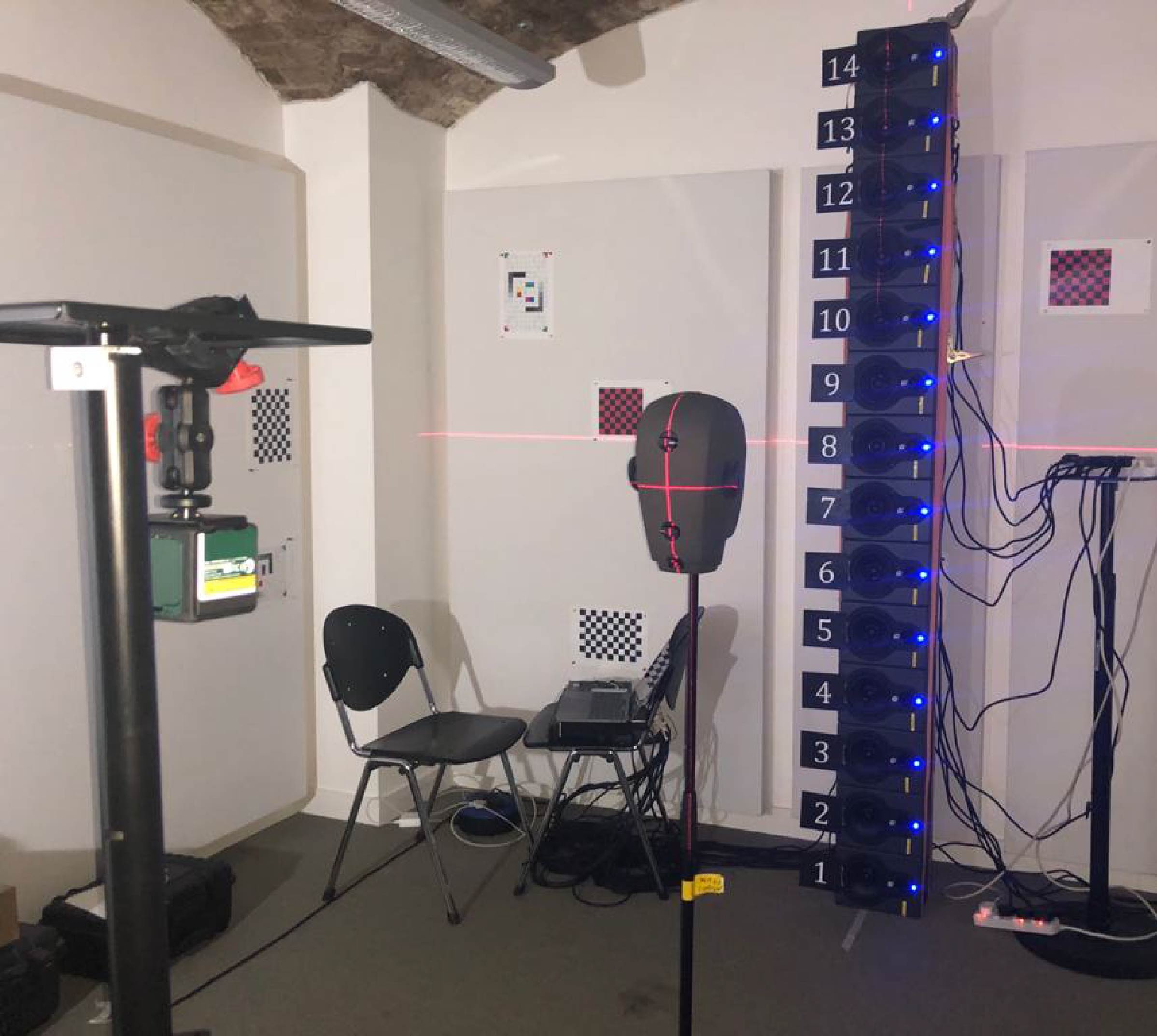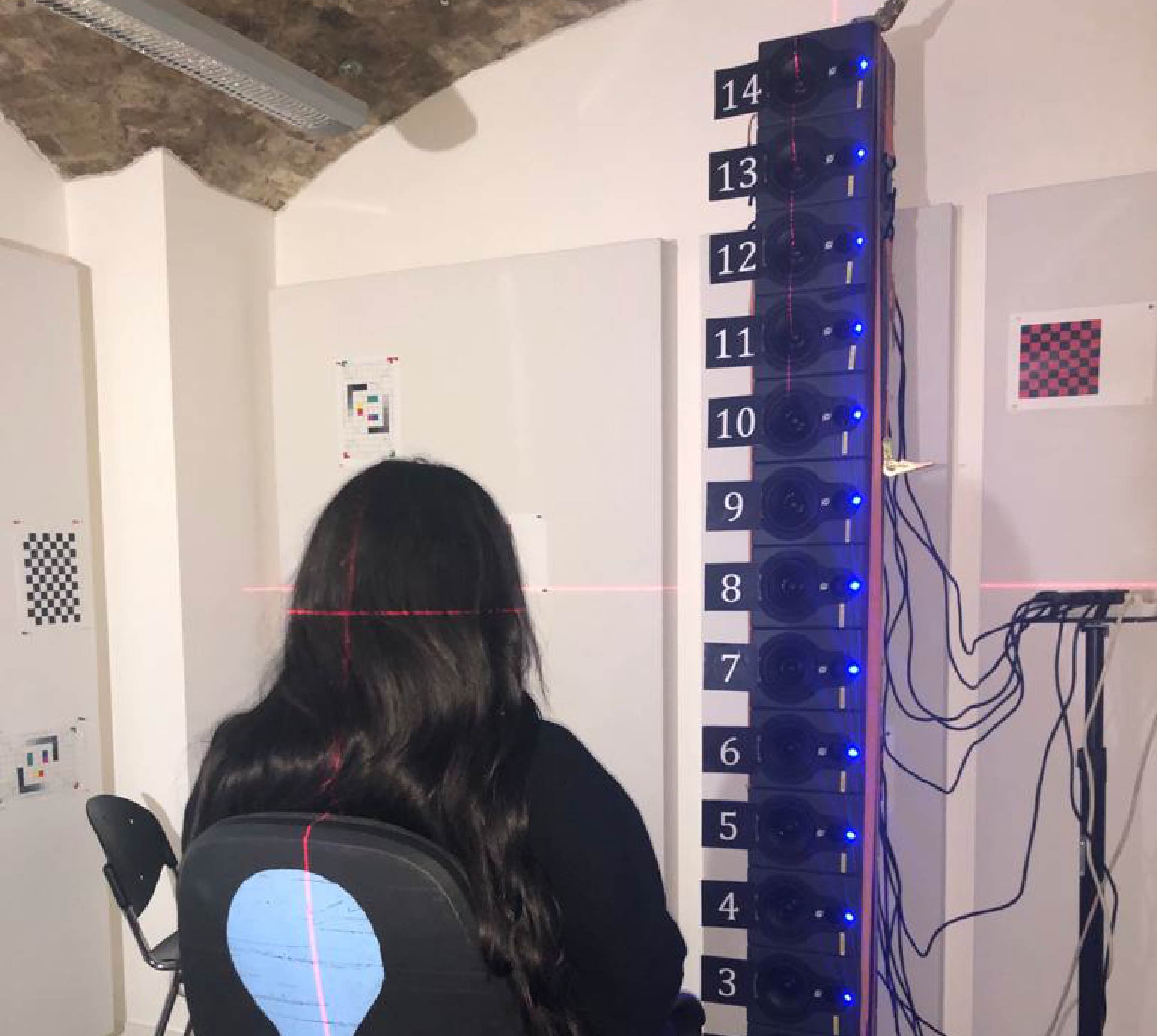Masters research carried out for Sennheiser - Investigated the ability of a headset to deliver a convincing augmented reality experience to users
Thesis Title
Examining the impact of hear-through audio on binaural localisation and auditory distance perception.
Augmented reality (AR) is part of the rapidly increasing integration of technology with everyday life. AR combines a listener’s environment, both visually and aurally, with virtual objects, creating a composite view of the real world. However, to achieve a convincing AR experience, a user must be capable of identifying how far away the AR audio (ARA) is from them and the direction from which it is coming.
As increasing amounts of AR applications are being utilized across a wide variety of industries, it is necessary for hear-through audio devices to be capable of accurately presenting listeners with an unadulterated representation of their surrounding acoustic environment.
Through quantitative testing using Python, and qualitative user testing, the ability of the Sennheiser AMBEO Smart Headset was examined, to see if it delivered a realistic AR experience for the user.

Quantitative Testing
The aim here was to see if the head-set would alter any of the necessary cues needed to localise sound sources before the device was tested on actual users.
Recordings were made at different angles, elevations and distances around a dummy head microphone. These recordings were made with and without the hear-through audio headset on the dummy head microphone. Binaural room impulse responses (BRIR) were then created. BRIRs represent the impulse response at a person's ear when they hear a sound from a specific angle and elevation. These were used to analyse the hear-through device in Python.

Analysis
Analysis showed that the head-set would allow the user to determine what distance the AR audio was from them, and at what direction it came from, but that perhaps the user would not be able to determine the elevation of the sound source.
This made sense as the shape of your ear influences your perception of elevated sound sources. As the addition of the headset on the user’s ear altered this shape, it also altered what they heard. The graph shows the difference between the recordings with and without the head-set (AMBEO).

User Testing
Sound source localisation in the vertical plane (elevated sound sources) relies largely on cues which are produced by one’s own ears and upper body, meaning it is quite challenging to accurately analyse the localisation of elevated sound sources using the dummy head microphone. As subjective listening tests are recognised as being a reliable way of measuring the quality and performance of any audio system, it was decided to carry out subjective listening tests. The primary objective of these listening tests assessed sound source localisation accuracy and the subsequent impact, if any, of the headset by comparing sound source localization with the headset, to natural hearing results.

Experimental Design
Tests were designed in accordance with International Telecommunication Union - Recommendations and all ethical practices were followed. When carrying out listening tests it is crucial to select appropriate audio samples as the type of audio used can have a large effect on the listeners perception of the sound source, and in turn the results of the listening test. Pink noise, drums and speech were used in this test.
Lasers were used to ensure that each test subject was at the same height, a familiarization stage ensured that the test subject knew how the test was going to be conducted and how to give their answers. The subjects heard different audio form different speakers and were asked to say where they thought the audio was coming from. This was done with the user wearing the headset and without it. The results were analysed using statistics and ANOVA.
Results
There are many design issues that are related to the seamless integration of AR audio. The hear-through device more often than not protrudes out of the users’ ears. This hinders their ability to accurately perceive the direction and distance of a sound source. Other similar devices such as hearing aids often suffer from low acceptance by the end user due to the poor sound quality that they deliver. Despite the advancements which have been made in audio technology, the adoption of hear-through devices remains limited.
The hear-through device examined in this research, maintained the cues necessary for sound localisation in the horizontal plane (sound source level with the user’s ears), and those for accurate auditory distance perception. The results from subjective listening tests however, showed the device significantly diminished auditory localisation capabilities in the vertical plane (sound source above or below the ear) due to the addition of the headset on the user’s ears, and how this altered the audio cues.
All of the necessary components needed for a hear-through audio device may not currently be capable of fitting into a device small enough to fit into the users ears without altering the directional dependant filtering of the outer ear.
It is clear that engineering design issues and manufacturing limitations have negatively impacted the user’s ability to accurately locate the source of the sound they are presented with through this hear-through audio headset.
What I learned
- Importance of experimental design & the effect that incorrect design can have on results.
- Improved my Python knowledge
- Having started this research not even knowing how to set up a microphone, there was a lot of basics to learn. I am now capable of setting up multiple microphones and speakers, and can use Reaper (digital audio workstation).
